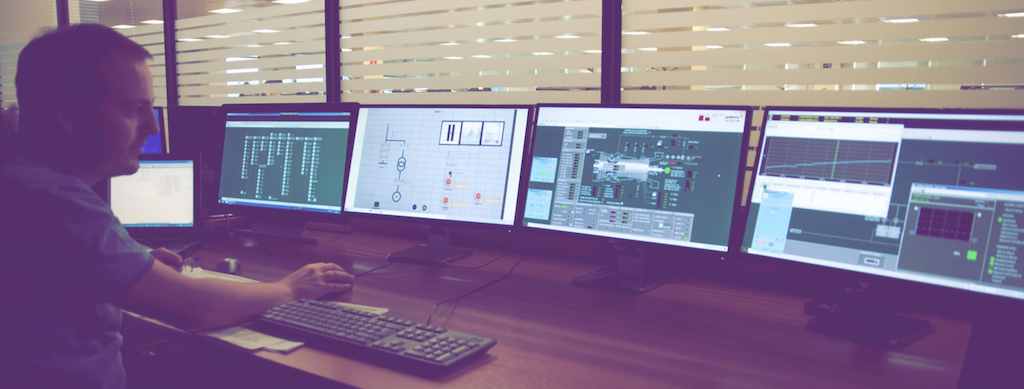A generic simulator is a highly accurate replica that does not correspond exactly to any specific facility, or at least not to the installation that the users are going to operate. Obviously, these simulators do share the main elements and operational philosophy of the majority of the facilities of this particular type.
Given that there is a significant degree of similarity with the facility, these simulators provide the main benefits of simulators and also offer certain advantages regarding customised development as:
- The users may make use of the simulator with reasonable timeframes and costs, as it is an already developed product.
- It is a consolidated solution, widely tested in a variety of installations and by a large number of users and instructors.
The GT26 generic combined cycle simulator has an energy generating capacity of 420 MWh. It is a single axis configuration with the following characteristics:
- Alstom GT26 gas turbine, 1 high pressure stage , 4 low pressure stages and 22 compressor stages.
- Alstom steam turbine with one high pressure turbine, one medium pressure and one low pressure.
- Alstom synchronous generator.
Benefits provided by a Gas Turbine Combined Cycle (GTCC) simulator
According to the EPRI (Electric Power Research Institute) study Fossil Fuel Power Plant Simulators for Operator Training, approximately 20% of GT combined cycle trips are directly linked to operator or maintenance personnel errors. Consequently, reducing operator errors through training, significantly decreases operating costs.
The improved learning process, due to simulator-based training allows for the optimisation of operating personnel performance, which ultimately leads to safer and more efficient operation of the plant. Furthermore, given the high degree of automation of combined cycle power plants, the use of a full-scope simulator allows the operators to maintain their skill and manual control in the event of disturbance and failure of automatic devices.
These are some of the benefits of using training simulators:
- Optimisation of plant operation and availability through improved operator performance and the minimisation of errors (mentioned previously).
- Quicker and more efficient assimilation of operation concepts and procedures.
- Operator training under different operating conditions, which allow them to be prepared for the identification of and response to off-normal situations.
- Transfer of best practices to new operators.
- Stimulation of teamwork and communication.
- Improved plant safety.
- Time and cost saving during the start-up of new facilities or design modifications.
- Extension of component service lifetime and reduction of the risk of damage to equipment.
What are the requirements to have available a generic simulator in your facilities?
There are different access modes, which provide the simulator with great versatility and the capacity to adapt to the different needs of the user. The requirements depend on the access mode selected by the client:
- Trainee station replica. This option requires the setting aside of a space at the client’s premises for installation of the replica.
- Remote simulator access. It is necessary to have an internet connection and credentials provided by
- Web/cloud simulator. The necessary requirements are the same as in the previous point.
The added value of Tecnatom simulators
Tecnatom has wide experience of the development and operation of simulators of different technologies, among them a generic GT26 combined cycle simulator that has already been developed and tested with clients.
The value provided by Tecnatom’s simulators is being able to rely on qualified instructors with wide experience in the use of this solution for the initial training of future operators, as well as for the on-going training of experienced personnel. They also have experience in hybrid training which is recommended for control operators of different technologies from that of the simulator.
Tecnatom also has a tool for the generation of training scenarios that allows for the generation and automatic execution of transients.
These are two of the levers that allow all the potential of the GT26 generic simulator, a versatile and consolidated solution, to be used.
Authors: Susana López y Ángela Alonso






